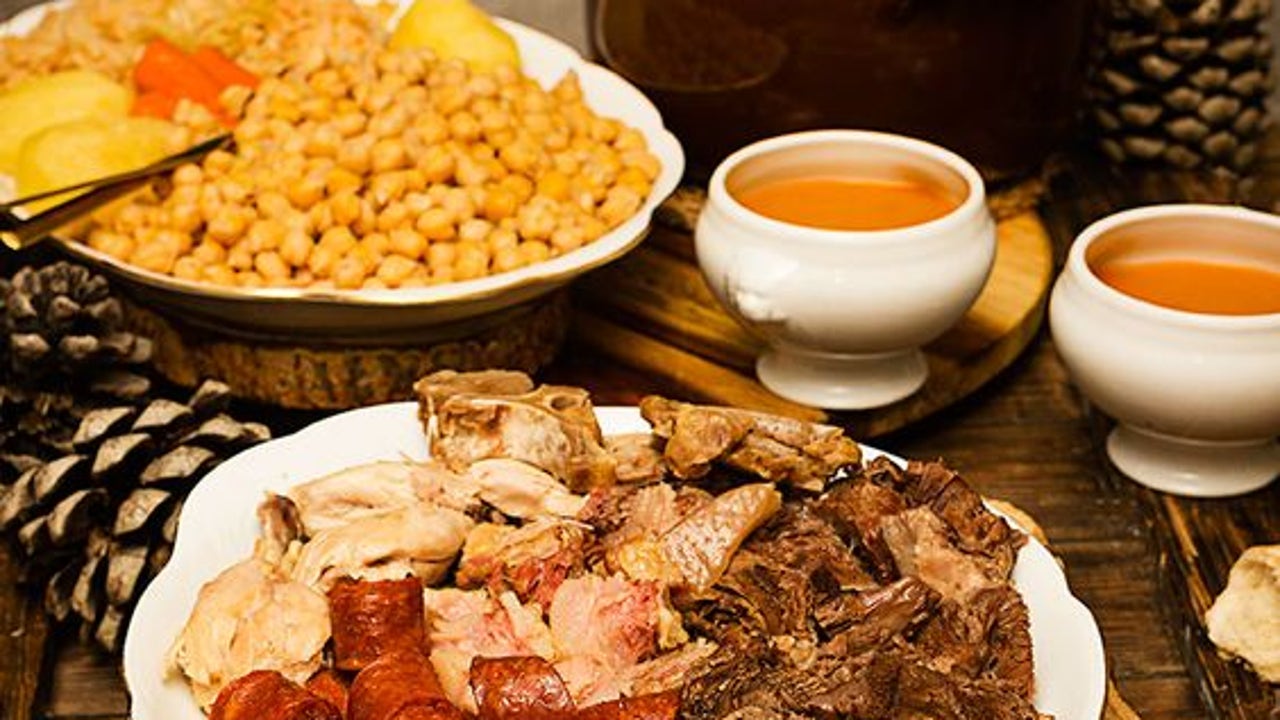Most people enjoy a good soup once the cold weather arrives, but few realize all that Sciences Who hides this painting? After all, to transform ingredients into a dish we need chemical reactions, physical and sometimes even physiological processes. So let’s go in parts, because the first mystery of soup is its seasonality. There are many hot dishes, but stews, stews and stews are the kings of winter. why is that? Is there a psychological reason or is it purely cultural?
Well, like many other things, it’s largely a cultural issue, but there are some tangible reasons. the dishes Which require chewing are usually cold in the processThis is partly due to air entering the oral cavity (even if we eat with our mouth closed). Spoon plates, on the other hand, are more flexible and, therefore, They occupy the entire available surface of the oral mucosa, resulting in better activation of temperature receptors.
On the other hand, the percentage of water in these dishes is higher. this means the avocado Spoons generally have a higher specific heat and lose temperature more slowlyBecause water has difficulty heating and cooling. In other words: at the same temperature, the dish contains the most water It will warm us longer, more gently, and without burning us as much at first. However, the difference depends very much on the situation and we cannot fully explain the success of winter soup without resorting to its almost mystical dimension, so we are better off focusing on the science behind its recipe.
How to prevent burning
Good news, you have to be pretty clumsy to make the soup burn, and again it’s because of the water. This liquid acts as a thermal soother. It is heated until it reaches 100 degrees, and when it reaches this temperature it evaporates. This means that as long as there is some water around the soup, it will not be able to reach a temperature that causes problems. To give us an idea: it wouldn’t even be able to turn brown, because this process occurs due to the Maillard reaction, which can only be observed above 130°C. Naturally, if too much water evaporates, the weight of the food will cause it to stick to the bottom, displacing any water that may be between it and the metal of the pot and receiving heat without any moderation. So, yes, this zone can reach temperatures of over 100°C and even up to 170°C, above which calcination is possible.
Remover
The next concept we need to understand is extraction. When we submerge meat, vegetables and legumes in water we have that, meat, legumes, vegetables and water, it is not a stew. The key to this dish is that the flavors of all its ingredients blend and transfer from the raw materials to the water, turning into a wonderful broth. How does this happen? The key is time and temperature, which are key concepts in cooking. In fact, extraction is the same process that occurs when we steep tea or brew coffee in our bodies Machinita. What we are looking for is that part of the substances that make up the raw materials dissolve and water becomes the most famous organic solvent. This is the first extension trick.
If we leave everything immersed long enough at room temperature, some of its compounds will pass into the water, but perhaps not in the right proportions. In order for some substances to melt, it is necessary to apply heat and at different temperatures, we will melt different substances. for this reason, When we use a pressure cooker, we reach higher temperatures than in a traditional pot, which not only speeds up the cooking process, but also changes the proportion of each substance dissolved slightly. However, the vast majority of tastes are unable to tell the difference. Of course, fats do not dissolve in water When the temperature exceeds 50 degrees Celsius, it turns from the solid state to the liquid stateforming a float over our broth.
Collagen
What we appreciate most about soup is its texture, because the flavors are the same and don’t change much from house to house, but there are houses where you risk your teeth with every bite of the shank. The trick is collagen, one of the most interesting proteins in cooking, found only in the animal kingdom. Collagen is the stuff we make gelatin with and is the reason why a good concentrated soup appears almost solid when chilled. When we begin to heat meat, we destroy the enzymes that tenderize it (calpains and cathepsins) and cause water to escape, which leads to muscle dehydration.
All this contributes to the hardening of the meat until it reaches 70 degrees Celsius. At this temperature, Collagen is found in tendons, skin, cartilage, and to a lesser extent in meatThe gelatin dissolves and forms in the broth and within the muscle pack itself. The longer the meat stays at 70°C, the better and more tender the result will be.Therefore, it is recommended to cook at a low temperature to get the best benefit from its texture.
starch
We have not said anything yet about the second coup. In it we find chickpeas and we know that if they are soaked they take less time to cook and therefore we can save electricity, but there is a better reason to rehydrate them the day before. Chickpeas are covered with a little skin called the skin, and when we put them raw in boiling water, they swell so quickly that the skin breaks off and remains loose.Which contributes to dissolving part of its interior in the broth. If we want it to be clearer and more delicious, we have to slow it down, and we can achieve this at room temperature.
The process involved is known as osmosis.. When two spaces are connected by a membrane that only allows water to pass through, it tends to pass from the more dilute space to the more concentrated space. In this case we can imagine that the membrane is the skin and that the most concentrated space is the inside of the chickpea. for this reason, Water gradually enters its tissues, causing it to swell without tearing its covering.
All that’s left to do is talk about the tubers: potatoes, carrots, turnips… something happens in the pot that makes them soft and creamy. It’s not that they become mushy like cabbage, but that they practically turn into mush if neglected. The process behind this magic is called gelatinization and is the same as what happens to pasta or rice. It’s about a molecule that is very present in all of these ingredients: Starch. It is a carbohydrate that plants use to store energy and is found in a type of granule between plant tissues. When water seeps into these granules, they become wet and increase in size about 100 times. Between this and the heat we were able to cause part of its content to escape in the form of amylose. (One of the components of starch). This seeping molecule will trap water in the structure of the vegetable and give it the typical texture of a cooked potato.
If we spend too much time, the potatoes will end up completely broken, so we should add them at the end of cooking, or if we are more scientists than gourmets, We can acidify the broth with a little vinegar because by reducing the pH of the liquid, the potato structure will remain firmer, even when the inside is cooked to perfection. Here is (part) of the science of cooking. Now all that’s left is to entrust a recipe for next weekend, but whether it’s a mountain, a Galician, a gypsy bowl, a maragato, a libanijo, an Extremaduran, a Madrid, a carne d’ola, an Asturian bowl or a decadent bowl, there’s One thing is clear: every home has its own recipes, and science will never be able to unify them.
Don’t be known:
- The first step in the scientific approach usually consists of defining terms, which is not easy in the case of soup. What exactly is soup? Is fabada a soup? There is a whole world beyond the Madrid version and no one can deny that Galician soup is actually a soup. Where do we draw the line? In the Escudilla? In the canary bowl? We will have to agree on it socially, just as with species classification. No individual belongs to a different species from that of his or her parents because changes occur gradually, but it is appropriate for us to place labels to refer to the world. For the purpose of this article: if it contains legumes, meat, and vegetables, it is a dish.
References (MLA):
- Lopez-Alt, J. Kenji. Food Lab: Better Home Cooking Through Science. W. W. Norton & Company, 201512
- Nelson, David L., and Michael M. Cox. Leininger: Principles of Biochemistry. Sixth Edition, Omega, 9788428216036.





